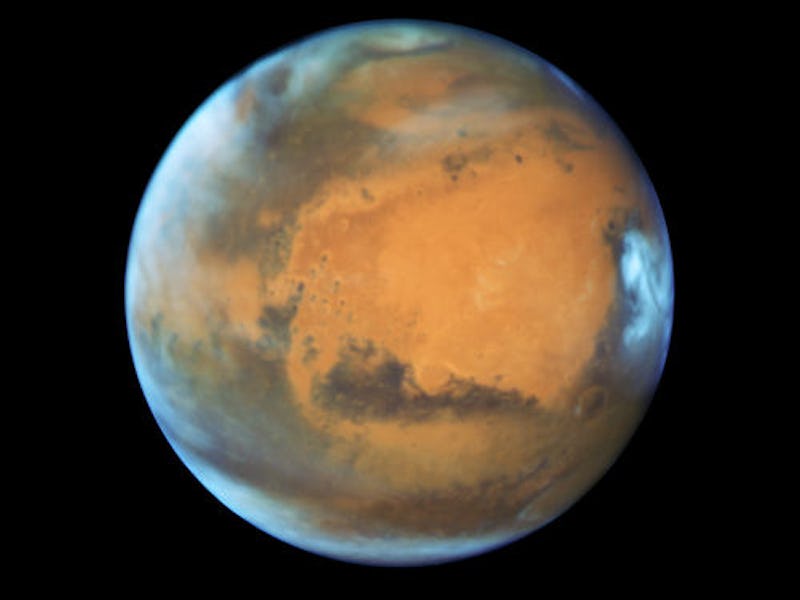You need to see Mars at opposition tonight
This is the brightest the planet will appear to us for the next 15 years.

Celestial objects come and go from view in the night sky. Whether it be the full Moon, a meteor shower or just the best night to see Mars, we're here to direct your eyes skyward and tell you to look up and appreciate the wonders of space from Earth.
This week, we're asking you to marvel at the shinning beauty of Mars as it appears at its brightest on Tuesday night.
On October 13, Mars will reach opposition for our view of the sky, appearing at its biggest and brightest to Earthly sky gazers.
A planet coming in opposition means that they come directly opposite of the Sun, perfectly aligning with the Earth and the host star.
Mars is the fourth planet from the Sun, while Earth is the third. In the time that it takes Mars to make one trip around the Sun, Earth would have almost completed two trips around the Sun. As a result, the planets' orbits sometimes meet.
Earth will orbit between the Sun and Mars on Tuesday at approximately 7 p.m. Eastern.
An illustration showing the Earth as it crosses in between the Sun and Mars during the planets' orbits.
Mars oppositions happen about every 26 months, and every 15 to 17 years the planet's opposition takes place when Mars is at its closest point to the Sun.
In 2003, Mars' opposition took place when it was at its closest position to the Sun in almost 60,000 years therefore the planet appeared extra bright to us on Earth. This year, the planet is not as close, but it is still a mere 38.57 million miles away from Earth.
This is the first time Mars has come in opposition with the Sun since July 27, 2018, and it won't be as bright as it is this year until the year 2035.
This is an especially good year to view the planet in opposition, as it will appear as a fiery red star in our night sky. In fact, the planet will appear brighter than all other stars in the night sky throughout the month of October.
Mars rises in the east as the Sun sets in the west, and reaches its peak in the night sky at midnight.
The planet can easily be seen with the naked eye thanks to its reddish hue. However, a small telescope will allow astronomy enthusiasts to look at the Red Planet in more detail, observing some of the features that make up the surface of Mars such as its sand dunes and dark streaks.